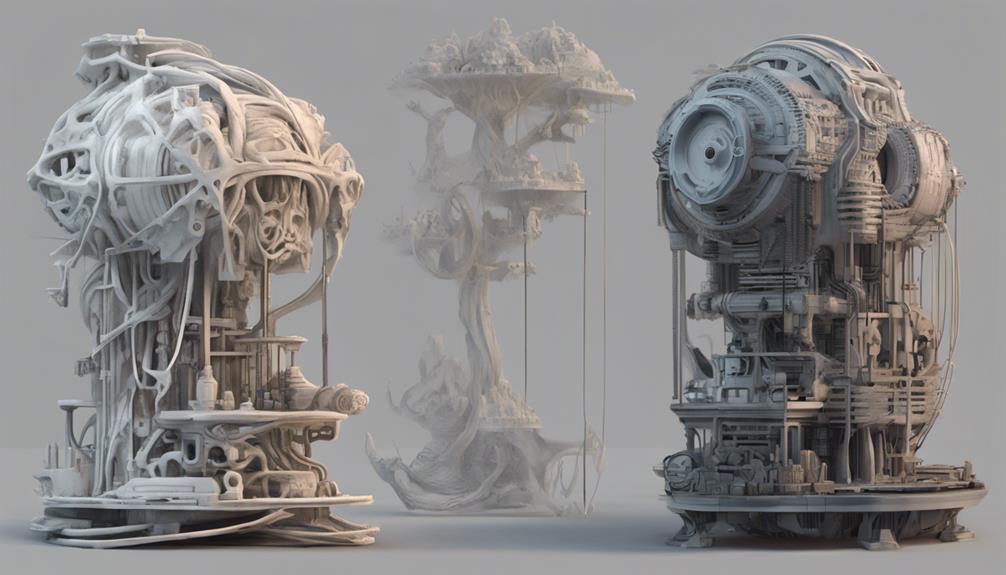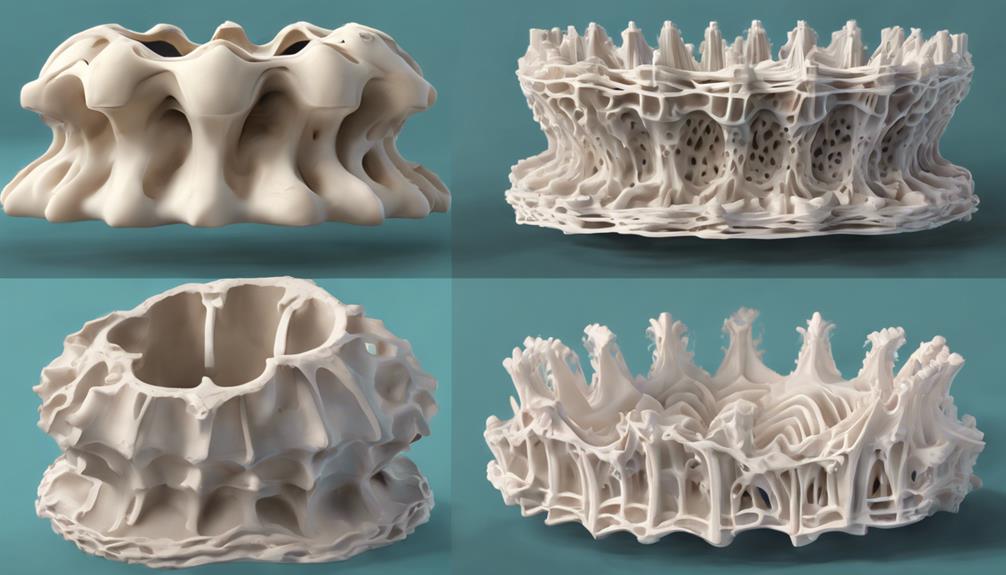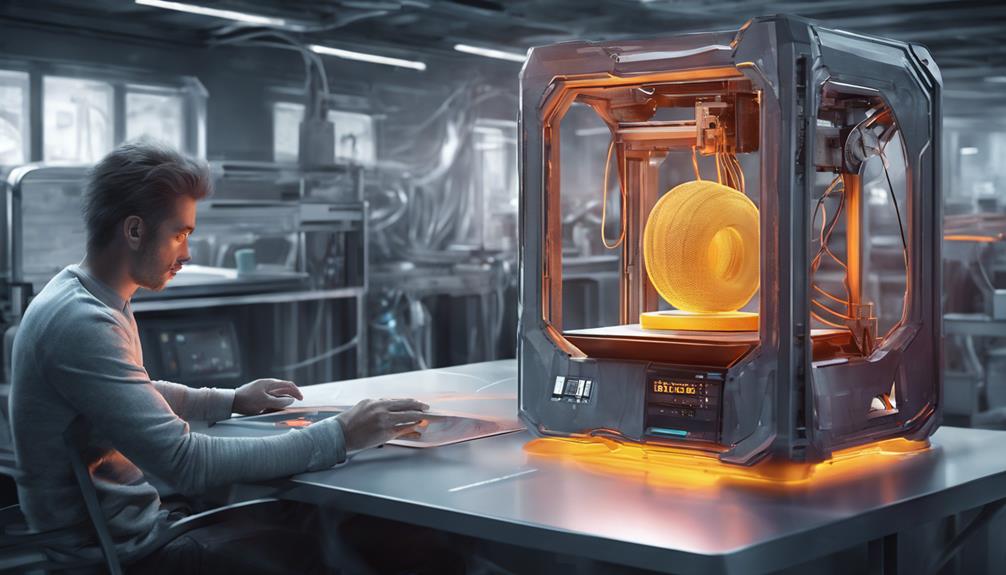Exploring the intricacies of 3D printing speed optimization reveals a domain where efficiency meets precision, revolutionizing the additive manufacturing landscape. By delving into the nuanced techniques of print speed adjustment, travel and retraction speed fine-tuning, and infill optimization, a world of accelerated production awaits. The quest for faster prints without compromising quality is a tantalizing journey that promises to disclose secrets that could redefine the very essence of 3D printing.
Print Speed Adjustment Techniques

When optimizing 3D printing speed, adjusting print speed settings is essential to enhance extruder movement efficiency and overall production time. By modifying the print speed settings, the extruder can move faster, reducing the time taken to complete each layer.
This adjustment is important in balancing the desire for faster printing with the need to maintain print quality. Increasing the print speed too much can lead to issues like poor layer adhesion and inaccuracies in the final print.
Therefore, finding the best print speed for different parts of the print, such as outer walls, infill, and support structures, is necessary to achieve the best balance between speed and quality in 3D printing.
Travel and Retraction Speed Tips
Effective optimization of travel and retraction speeds is vital in maximizing efficiency and minimizing printing issues in 3D printing processes. Adjusting travel speed impacts head movement during non-extrusion moments, aiding in reducing idle time. Increasing travel speed can save time, but it must be balanced to avoid potential layer shifting problems.
Retraction speed settings are essential for preventing stringing and filament grinding. Proper retraction speed guarantees clean shifts between print segments. It is advisable to test different retraction speeds to find the best setting and avoid extruder wear.
Infill and Shell Optimization Methods

Exploring methods to optimize infill and shell structures is essential for enhancing efficiency and quality in 3D printing processes. By adjusting infill percentage and shell thickness, printing speed can be greatly improved without compromising structural integrity. Here are some key optimization methods:
| Optimization Method | Description | Benefits |
|---|---|---|
| Variable Infill | Adjust infill density based on the part | Faster prints, less material |
| Shell Thickness | Increase outer wall thickness | Improved strength |
| Pattern Selection | Choose infill pattern wisely | Balanced strength and speed |
These strategies not only contribute to faster printing but also lead to resource savings and enhanced print quality.
Layer Height and Support Strategies
Optimizing layer height and support strategies in 3D printing processes is essential for achieving efficient and high-quality results. When considering layer height, a balance between speed and quality must be struck.
Increasing layer height can greatly reduce printing time, but it may compromise the surface finish and finer details of the print. Conversely, decreasing layer height improves resolution but extends printing duration. Selecting an appropriate layer height based on the specific requirements of the print job is vital.
Additionally, strategic planning of support structures is necessary. Minimizing the use of supports can decrease printing time; however, adequate supports are necessary for complex designs to ensure successful prints.
Finding the best balance between layer height and support strategies is key to enhancing the overall 3D printing process.
Future Speed Enhancements in 3D Printing

Innovations in 3D printing technology are poised to revolutionize printing speeds in the near future. Advancements such as faster curing processes, improved extrusion mechanisms, and enhanced slicing algorithms are expected to greatly increase the pace of 3D printing.
Researchers are exploring new materials that can be printed at higher speeds without compromising quality, while also investigating novel techniques like simultaneous printing with multiple materials. Additionally, the development of larger print beds and the integration of automation features are projected to streamline the printing process further.
These upcoming speed enhancements hold the potential to not only accelerate production times but also open up new possibilities for manufacturing complex and intricate designs with unparalleled efficiency.
Frequently Asked Questions
How Can I Reduce Print Time Without Sacrificing Print Quality?
To reduce print time without sacrificing quality, adjust print speed, travel speed, and retraction speed settings. Optimize infill percentage, layer height, and shell/wall count. Experiment with different settings to find the right balance between speed and print quality for your specific needs.
What Are the Best Practices for Minimizing Stringing During Prints?
To minimize stringing during prints, optimize retraction speed settings to prevent filament issues. Adjusting travel speed can also help. Experiment with different parameters to find the right balance between print quality and speed, ensuring successful 3D prints.
Is There a Way to Speed up Printing Without Compromising Structural Integrity?
To speed up printing without compromising structural integrity, optimize print speed settings, adjust travel and retraction speeds, and reduce infill percentage. Experiment with layer height and shell thickness while minimizing supports for faster prints without sacrificing quality.
Can Adjusting Layer Height Significantly Impact Printing Speed?
Adjusting layer height can have a notable impact on printing speed. Increasing layer height reduces the number of layers needed, speeding up the printing process. However, this adjustment may sacrifice some detail and surface quality. Balancing speed and quality is essential in 3D printing.
What Advancements Can We Expect in 3D Printing Speed Technology?
Advancements in 3D printing speed technology are anticipated to focus on faster curing methods, enhanced movement mechanisms, and smarter slicing algorithms. These innovations aim to reduce printing durations to a large extent, boost efficiency, and broaden application possibilities in various industries.
Conclusion
In the domain of 3D printing, deciphering the enigmas of speed is akin to traversing a swift river with precision and finesse.
By mastering the art of adjusting settings, optimizing techniques, and embracing innovation, users can ride the currents of efficiency and quality towards the horizon of limitless possibilities.
As the winds of progress continue to propel the industry forward, the future of 3D printing speed holds the promise of reaching new heights with ease and grace.